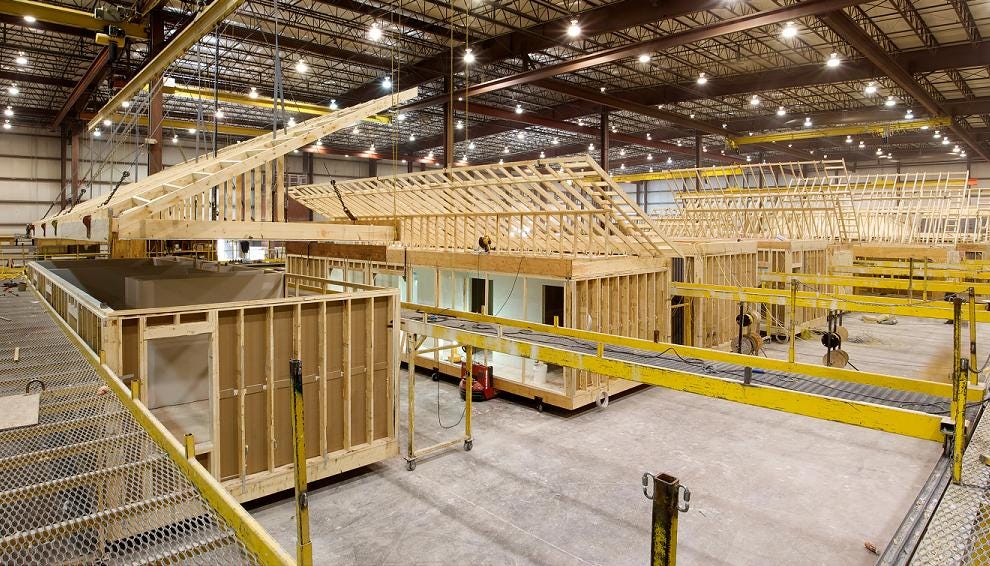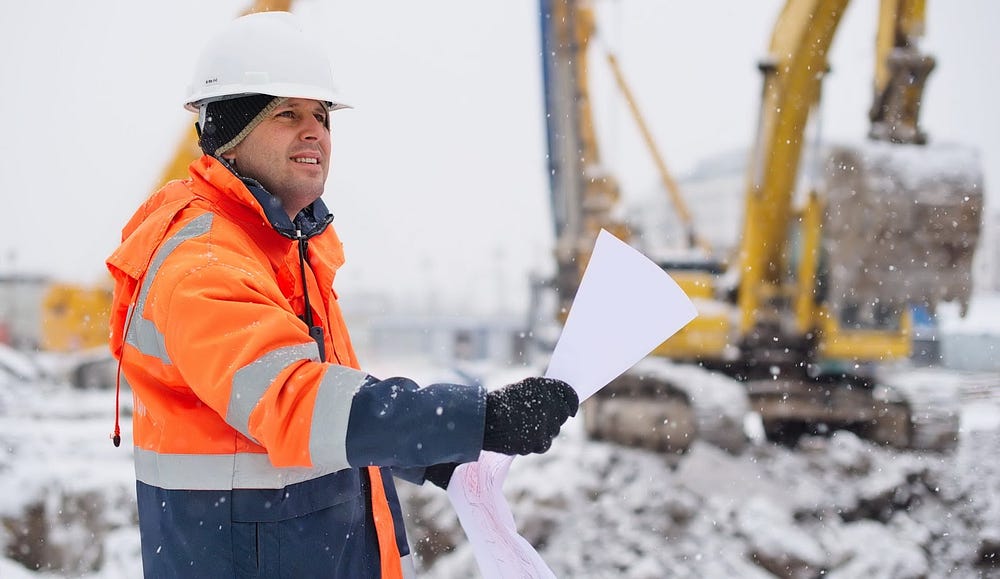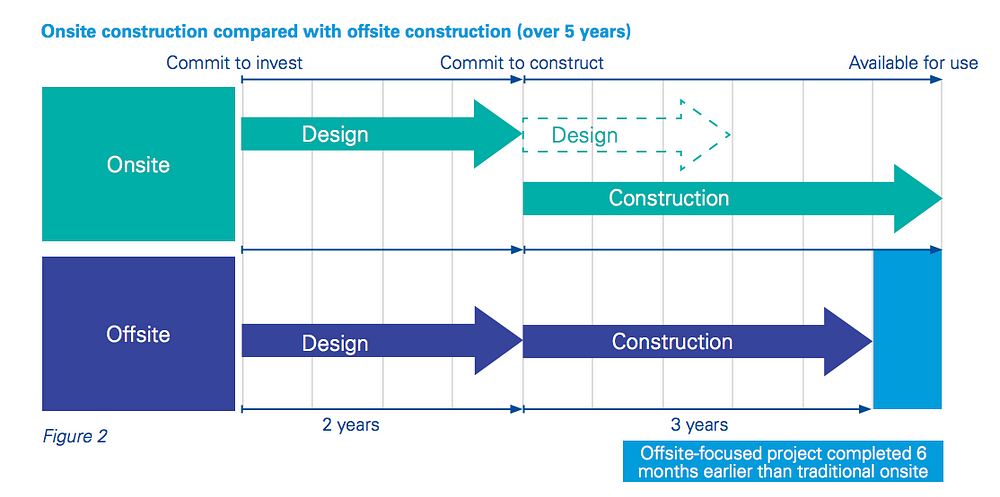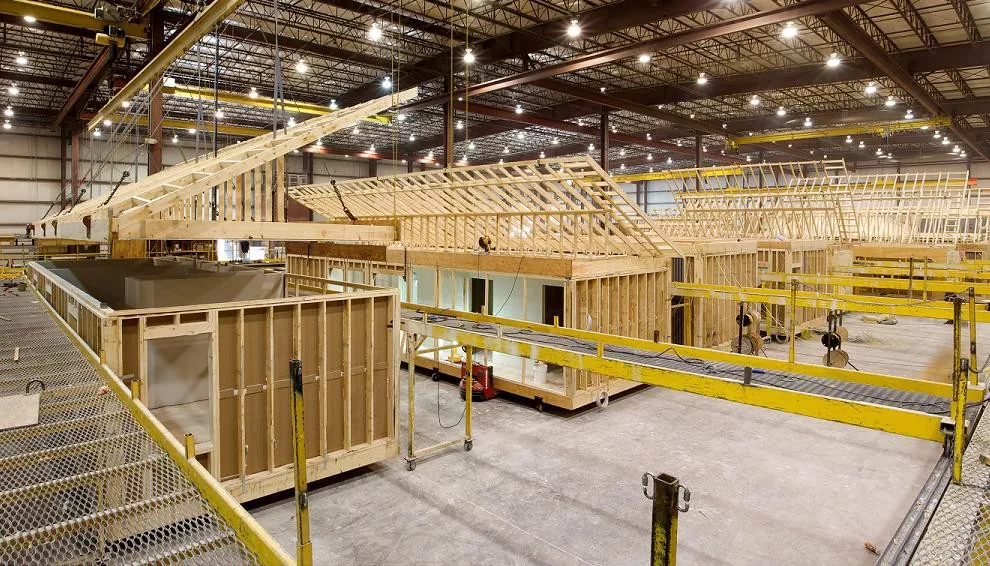The construction industry is notorious for heavy delays, quality defects, running over budget and low productivity. Can offsite construction fix the process, make it more efficient and deliver a better product for everyone in the value chain?
At first glance, European housing construction looks in solid shape. It has seen nearly uninterrupted growth after the 2008 financial crisis and property prices have risen 10% across the continent in the last five years. Not a week seems to pass without another city making headlines for record housing prices.
But if you have ever been involved in construction or renovations, chances are that your impression of the industry is a little less rosy.

In Germany, over 70% of all construction projects go over budget and every tenth home ends up at least 30% more expensive than planned. Every fifth house is not finished on time, postponing rental income and creating big headaches for owners. These headaches don’t necessarily stop when the construction is done, as surveys in the UK found over 98% of all finished projects to display at least minor defects and more than half to have major faults.
The global construction sector actually holds the record of having the lowest productivity gains of any industry in the past two decades, stalling in countries like Japan and Germany and even falling in Italy and France. Whereas for manufacturing, the value-added per hour has increased by 4% per year, it has increased by only 1% for the construction sector.
Something is broken in the way construction is run mostly today. How can it be that this industry has such difficulties in meeting deadlines and budgets, and what solutions exist to move construction forward and deliver a better outcome for the customer?

Traditional Construction
The answer is found in the fact that most construction today is still run the same as it has always been — at the final location. Traditional construction (also called onsite construction) is a highly linear process where each step depends on the completion of the prior step. Planning is complicated, walls can only be erected once the foundation is dry, the roof can only be installed once the walls are up and so on.
This method makes running projects very vulnerable to all sorts of complications: bad weather, illnesses or supply shortages can topple the schedule like a row of dominos and move the finish date further and further back.
Project planning in onsite construction also carries inherent risks for the investor. It is usually based on the “design-bid-build” principle, where the owner first hires an architect to design the project who then engages one or more subcontractors to place a bid and handle construction. In design-bid-build, every project involves a high number of stakeholders, including not only the architect and contractors, but also suppliers, engineers, planners, surveyors and installers. The amount of parties involved can also vary significantly during a single project.
These parties often have conflicting interests with the investor. Architect fees being the most obvious are commonly correlated to construction cost, leaving little to no incentive for cost optimisation. A high number of stakeholders also increases information asymmetries and transaction cost, which can be especially problematic for developers with little or no prior real estate experience.
Moving Construction Inside
The construction method of prefabrication changes the old way of building. In prefabrication (also called “prefab construction” or “offsite construction”), projects are prebuilt in a factory and delivered to the site for final setup. Prefabrication can come in different levels of completion. A project may use a prefab company to make only specific parts in a factory and join them with conventional construction. In the most complete form, an entire home can be constructed inside the factory, either as separate panels that are connected onsite, or as a fully finished modular unit that is transported by truck.

In such cases prefabrication leads to full vertical integration, with a single company designing and constructing the entire home. As a result, houses have evolved to a classical product like an automobile. You don’t pay a separate design fee, but simply one fixed price for the entire product.
The Advantages of Prefabrication
Prefabrication offers several important benefits, especially regarding construction quality and speed of delivery. Working in a controlled and weather-independent space eliminates errors and leads to a higher finishing-quality. Prefab homes also tend to have dramatically shorter construction periods, since the factory-setting enables the automation and standardisation of production processes and allows for construction steps to be handled in parallel. For example, multiple walls can be constructed at the same time, and the foundation at the final location can be prepared while the project is being finished in the factory.
Buying for instance a home this way is much more predictable and transparent. In prefabrication, the design, planning and construction are managed by one company, increasing efficiency in communication and giving a homeowner one accountable point of contact. Studies have shown prospective homeowners to place a growing importance on planning-security and convenience in the buying process, two areas where prefab providers fair better.
There are additional advantages to offsite construction. Prefabricated buildings have a lower carbon footprint due to less travelling back-and-forth to the site and a more efficient use of construction materials, as well as being safer and healthier for workers.
One could also expect prefab construction to be cheaper, which interestingly turns out not (yet!) to be so. Since the big cost drivers like land purchase and building materials remain constant, prefab homes tend to have a similar price tag to conventional ones. “There are huge overheads in establishing and operating any prefabrication operation, like any other manufacturing business. These have to be recovered through the sale of the product”, says Mark Southcombe, Senior Lecturer at the School of Architecture at Victoria University of Wellington.
Exact price comparisons between the two different building methods are hard to come by, due to the individual nature of construction projects. In Germany however, average costs per square meter for a medium to high-quality prefab home range between 1.500€ and 2.500€, which is about the same for average traditional homes.
Nevertheless, the prefab investor can expect to reap economic payoffs, especially due to the decreased building time and better planning. Faster construction times lead to earlier rental income and shorter borrowing periods, with a KPMG study finding financial savings of 7% to be possible.

Source: KMPG
Market Share and Uptake
These benefits are not going unnoticed and the market share of prefabricated buildings has been steadily rising in Central Europe. In Germany, it is above 20%, while Sweden (with cold weather that obstructs outside construction) is the European frontrunner with 80% of all homes being prebuilt. With a prospected 3.2% annual growth the prefab market is expected to outpace the overall housing market (2.0% annual growth) and to gain further acceptance in Central Europe.
Nevertheless, the majority of all homes are still built in the conventional way and market share in many countries remains relatively low. In the UK and France it is at around 10% for instance. So why is offsite construction not more popular yet?
Several market barriers persist that inhibit uptake:
- First, misperceptions remain regarding the quality and durability of prefabricated homes. Many people think of prefab homes as a cheap alternative to traditional housing with a lower resale price. These perceptions are largely debunked however as many studies have shown prefab homes to have an equal lifespan and quality to conventional ones.
- High cost of entry is another challenge for the industry. Construction has traditionally not been very capital intensive, drawing investment mostly from the consumer. For a prefab company starting up the factory, obtaining certifications and establishing a sales network is highly capital intensive and requires a shift to more institutional investment.
Prefab Mass Customisation vs Offsite Construction
One of the biggest challenges for the industry however, is to find the right balance between standardizing and customizing. In order to benefit from automation and economies of scale, prefabrication must come with a certain degree of standardisation within a project. This stands in contrast with desire for individuality, the necessity for good planning and the diverse nature of different housing needs. Private investors and larger developers have a strong interest in building unique projects. In order to make more use of the advantages of offsite construction, the prefab industry needs to find innovative ways to play the strength of this way of construction and at the same time satisfy the specific demands of the projects and ultimately the customer, while standardizing their processes as much as possible.
The way forward seems to be to integrate a “mass customisation” strategy to construction. Mass customisation is already common in industries such as fashion, where you can individualize a mass-produced item like a shoe, and has been applied to many other industries like car manufacturing or watch-making.
In order to offer unique solutions prefab companies will increasingly move to a strategy of mass customisation as well. In this production approach, manufacturers create small and automated parts that can be arranged into an almost countless number of different configurations. With this construction technology, investors will be able to completely customize their very own mass-produced prefab projects.
In our series “Trends in Real Estate”, we shine a light on the trends that are disrupting the real estate industry. We analyse how new technologies are changing the way buildings are constructed, where investment activity is focused, and what the future of real estate might look like.
References:
- Arbeitsgemeinschaft für zeitgemäßes Bauen e.V.: Massiv- und Holzbau bei Wohngebäuden
- BPIE: Driving Transformational Change in the Construction Value Chain
- The Economist: Efficiency eludes the construction industry
- Energies: Using Modularity to Reduce Complexity of Industrialized Building Systems for Mass Customization
- The Guardian: More than half of new-build homes in England ‘have major faults’
- KPMG: Smart construction. How offsite manufacturing can transform our industry
- Roland Berger: Prefabricated housing market
- Springer: ZEMCH: Toward the Delivery of Zero Energy Mass Custom Homes
- Sustainability: A Construction Management Framework for Mass Customisation in Traditional Construction
- Welt: Der Hausbau wird für viele Deutsche zum Desaster








